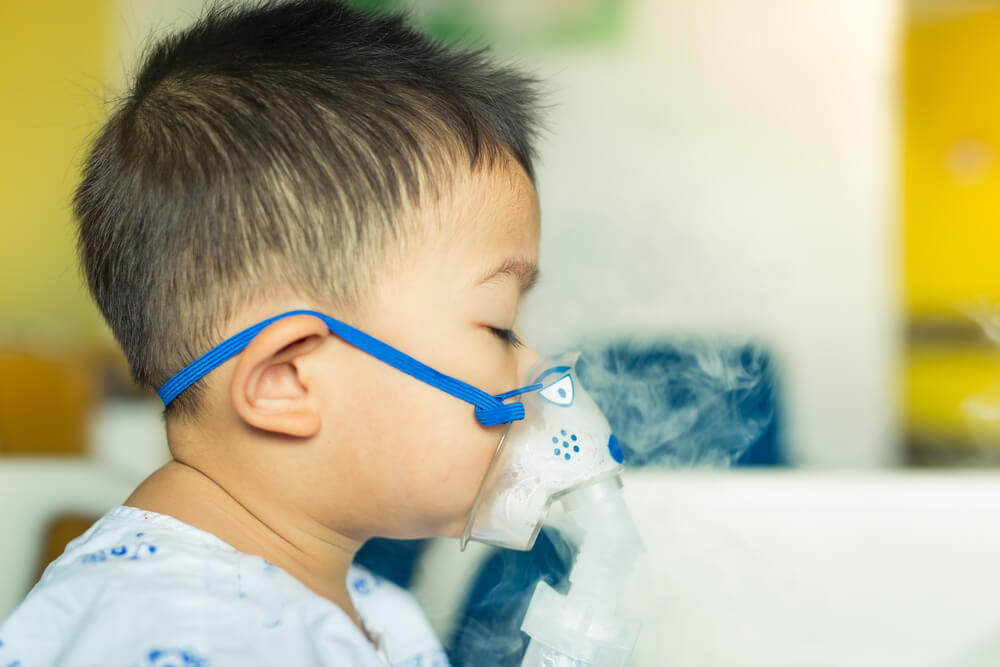When you develop bronchiectasis, your airways become inflamed and widened, and their ability to move mucus away becomes limited due to the destruction of cilia. This results in the accumulation of mucus in the airways, which will most likely lead to infection. Therefore, the treatment for bronchiectasis aims to prevent further damage to your lungs by stopping the infection, expelling mucus and reducing your symptoms.
If left unchecked, bronchiectasis will make breathing quite difficult, and you might start coughing as a result. This condition must get attended to before it leads to further complications. Additionally, the airways’ structure is such that any damage that occurs to them is irreversible; therefore, it’s best to keep the damage to a minimum.
How Common Is Bronchiectasis?
The risk of getting this condition increases as one gets older. Statistics show that one out of every 150 individuals over the age of 75 years or older has bronchiectasis. However, it is important to note that while it’s mainly a condition affecting the elderly, young people can also get it.
In adults, the disease is much more prevalent in women than men. Surprisingly, bronchiectasis in children shows the exact opposite distribution; boys tend to get bronchiectasis more than girls. Fortunately, the research available shows that it’s very rare for infants to be born with this condition.
What Are the Risk Factors Associated With Bronchiectasis?
The following are some of the conditions that increase one’s risk of getting bronchiectasis:
- Chronic inflammation of the lungs
- Cystic fibrosis
- Severe lung infections, including tuberculosis and pneumonia
- A suppressed immune system
- Repeated aspiration of foreign bodies like food.
Causes of Bronchiectasis
Bronchiectasis occurs when the airways of the lungs become damaged and widened. This can occur as a result of an infection or other related conditions. Sometimes the cause of bronchiectasis is not clear.
Because of their anatomy, the human lungs are continuously exposed to microorganisms that can cause diseases. To counter this, your lungs have complex defense systems that keep them free from infection. If either bacteria or a virus manages to evade these defenses, the body will launch an attack by sending white blood cells to the location.
As they fight the infection, the white blood cells release chemicals that cause the surrounding tissues to inflame. This inflammation is a normal reaction, and in most people, it passes without creating any problems. However, it damages the elastic-like tissues and muscles in the bronchi walls when prolonged, causing them to become wider.
The damaged bronchi becomes filled with mucus, which triggers persistent coughing making your lungs more vulnerable to infection. A repetition of this cycle leads to chronic bronchiectasis, which causes further damage and worsens the condition. Medications for bronchiectasis are therefore targeted at removing mucus and dealing with the accompanying inflammation and infection.
Common Causes
In 50% of all bronchiectasis cases, doctors cannot pinpoint the exact causes. The following factors predispose or put people at risk of developing the condition.
Immune Suppression
Bronchiectasis has been known to occur in people that have a weakened immune system. This makes their lungs more vulnerable to infection and, therefore, tissue damage. Some individuals are born with an immune deficiency, while others acquire it due to diseases like HIV.
Allergic Bronchopulmonary Aspergillosis (ABPA)
Bronchiectasis can develop as a complication of the allergic condition known as allergic bronchopulmonary aspergillosis (ABPA). People with this condition are allergic to aspergillus. Aspergillus is a fungus that is found in different environments worldwide.
When a person with ABPA breathes in the fungal spores of aspergillus, their immune system reacts by launching a prolonged inflammatory reaction. This reaction can then progress and turn into chronic bronchiectasis in children and adults alike.
Aspiration
Aspiration occurs when stomach contents accidentally pass into the lungs. The lungs are quite sensitive to foreign bodies, and their presence can lead to an inflammatory reaction. If the inflammatory reaction is sustained and lasts longer than necessary, it then turns into bronchiectasis.
Cystic fibrosis
Cystic fibrosis is a common genetic condition characterized by excessive mucus in the lungs. When mucus accumulates, it provides the perfect conditions for bacteria to multiply, which leads to infection and signs of bronchiectasis.
Abnormal Cilia
The duty of cilia in the lungs is to protect the airways and carry away excess mucus. If cilia are unable to perform their function, bronchiectasis can occur.
Conditions that lead to abnormal cilia include Young’s disease and primary ciliary dyskinesia. The former is caused by exposure to mercury, while the latter is a genetic disorder.
Connective Tissue Disorders
Certain inflammatory diseases are sometimes implicated as the causes of bronchiectasis.
These include the following:
- Sjögren’s syndrome
- Ulcerative colitis
- Rheumatoid arthritis
- Crohn’s disease
Doctors think these conditions are immune-mediated.
Symptoms of Bronchiectasis?
The most common symptoms are:
- Coughing with the expulsion of excessive mucus – sometimes the mucous has blood in it
- Chest pains or tightness in the chest
- Whistling noises when breathing
- Clubbing of nails
- Excessive weight loss
- Fatigue
- Fevers
- Night sweats
- Shortness of breath
How is Bronchiectasis Diagnosed?
If a doctor suspects that you have bronchiectasis, we are likely to order the following tests:
- A Chest CT scan or an X-ray
- Blood tests
- Checking of infections in sputum
- Lung function tests
- Bronchoscopy
The Management and Treatment for Bronchiectasis
It is impossible to cure bronchiectasis, but doctors can manage it. Usually, your doctor will prescribe certain medications, use particular devices or employ a combination of both. If the doctor manages to find the underlying cause of the bronchiectasis, we will have to treat that condition first.
Medications for Bronchiectasis
Doctors usually use antibiotics to treat bacterial infections in the lungs, macrolides to reduce inflammation, and drugs that help you expel mucus (expectorants). The doctor will also use airway clearance devices to help get the mucus out of your chest. There are also physical therapy exercises that you can do to help with chronic bronchiectasis treatment.
How to Prevent Bronchiectasis
You can only prevent Bronchiectasis if it’s not congenital. However, there are several ways to prevent yourself from getting lung infections. To prevent bronchiectasis in children, it is important to ensure that you vaccinate them against diseases like measles and whooping cough. If the child develops a cough, you should take them to the doctor as soon as possible.
Prognosis of Bronchiectasis
The chances of surviving bronchiectasis are dependent on the person’s age, state of their immune system, and how quickly they managed to get the treatment for bronchiectasis . Bronchiectasis treatment is quite effective; therefore, many people manage to live happy, normal lives with the condition.
Living with Bronchiectasis
If you are living with bronchiectasis, you should stick to eating a healthy diet, drinking plenty of water, and following a regular exercise routine. You should also avoid smoking at all costs, which might worsen the condition and hinder bronchiectasis treatment. Apart from that, you should ensure that you get vaccinated for flu each year as directed by your doctor. Lastly,
Bottomline
Bronchiectasis is a condition that is easily treatable in most cases. If you or your child start showing signs of the disease, please contact us as soon as possible, we have extensive experience dealing with this condition, and we will find you a solution in no time at all. Do not hesitate to comment with your questions or share your thoughts if you have any, we would love to read what you have to say.





